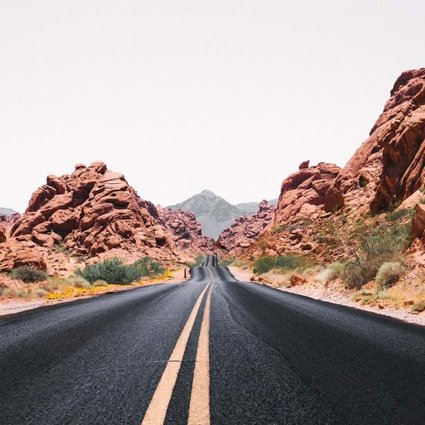
Thirsty city
This lesson considers the sustainability of Las Vegas in terms of rapid urban growth and demands on the city's water supply
Students investigate the problems of water supply and consumption in the city and how residents might conserve water through 'xeriscaping' or dry landscaping.
Key questions
Why is Las Vegas so thirsty?
How are residents being encouraged conserve water?
Why are schemes for meeting Las Vegas's future water demands likely to prove contentious?
Why is Las Vegas so thirsty?
Las Vegas is famous for dazzling fountains but the sprawling city that has been developed in the arid desert of Nevada, USA, is experiencing water shortages as its population grows in one of the fastest growing regions in the USA. Although the surrounding landscape is dry the city itself is relatively lush. This contrast is best seen from a satellite image of Las Vegas. But water supplies are running out. Surprisingly, it is not the fault of the tourists and the hotels. Hotels accounts for just seven per cent or the area's total water usage - 70% of which they use in rooms and kitchen and recycle. It is the growing number of residents moving from the other parts of the USA using water on lawns and gardens to recreate their lush and greener places of origin that is causing the city to become increasingly thirsty.
How are residents being encouraged conserve water?
Officials are promoting to local residents the idea of ‘xeriscaping', or ‘dry landscaping', a method of maintaining the lush looking garden using less than a half or a third of the water. Some schemes have paid residents to remove grass form their front and rear gardens. The idea is that people understand what it means to live in the desert rather than live unsustainably in water-rich bubble.
Why are schemes for meeting Las Vegas's future water demands likely to prove contentious?
The Southern Nevada Planning Authority is planning to build a 555km pipeline from central Nevada to Las Vegas as a solution to the city's future water supply problems. This may prove controversial because:
-
The water will be moved from rural areas where farmers need it to grow crops
-
Springs and natural habitats may disappear if the groundwater is pumped out and taken away by the pipeline
-
Growth of the population in the area is putting pressure on national conservation areas such as Lake Mead and Red Rock Canyon
Links
Starter
Look at this satellite image of Owens River Valley in eastern California.
Can you guess why the valley is dry?
Owens Lake was a salty lake until 1913, when the Owens River was diverted into the Los Angeles Aqueduct to supply drinking water to Los Angeles, quickly draining the lake. Today, Owens Lake is a dried salt flat that contains some pooled water following rains. The Washington Post web article has more details
Locate Las Vegas using Google Earth link to Activate the UNEP placemark and associated image layers, and read the information about urban sprawl and population growth.
Tech note: The UNEP placemark can be activated by turning on the Global Awareness Layer and ticking the UNEP box.
What are the problems of supplying water to Las Vegas?
Main Activity
Read the BBC article about the city's "dry future".
Write down all the references to water usage, noting the differences between the hotels and domestic users.
Research 'xeriscaping' (dry landscaping) as an alternative to traditional garden lawns. Watch the The New York Times video on xeriscaping.
Design an informational leaflet to encourage Las Vegas residents to conserve water and adopt xeriscaping as an alternative to traditional gardens.
Plot a climate graph for Las Vegas using the data and instructions provided.
Plenary
The Southern Nevada Planning Authority is planning to build a 555km pipeline from central Nevada to Las Vegas as a solution to the city's future water supply problems.
Why are some people opposed to the scheme? What are the other options for the city?
File nameFiles
File type
Size
Download